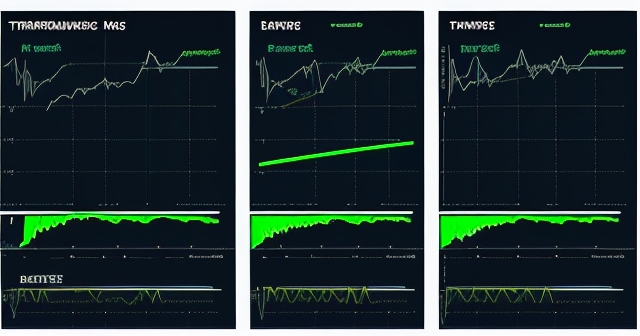Unlocking Market Secrets: A Comprehensive Guide to Exponential Moving Averages (EMAs)
Welcome, aspiring traders and seasoned market explorers! Have you ever felt overwhelmed by the constant ebb and flow of market prices, wondering how to find clarity amidst the noise? You’re not alone. Many traders seek tools that can help them understand trends and make informed decisions. Today, we embark on a journey into the world of technical analysis, specifically focusing on one of the most popular and dynamic indicators: the Exponential Moving Average, or EMA.
As your guide, our goal is to demystify complex financial concepts and equip you with the knowledge to navigate the markets confidently. We believe that understanding the ‘why’ behind the tools is just as important as knowing the ‘how’. So, let’s dive deep and uncover how EMAs can become a powerful ally in your trading arsenal, whether you’re looking at stocks, cryptocurrencies, or even exploring the vast landscape of Forex trading.
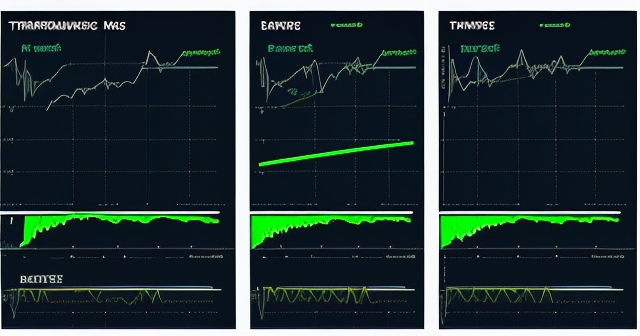
What Exactly is a Moving Average? Smoothing the Price Data
Before we get to the ‘Exponential’ part, let’s establish the fundamental concept. A Moving Average (MA) is essentially a line on a chart that smoothes out price data over a specific period. Think of it like taking the average temperature over the last week to see if it’s getting warmer or colder overall, rather than focusing on the temperature hour by hour. By averaging the price over time, moving averages filter out short-term fluctuations – the daily ups and downs that can often be misleading – to reveal the underlying trend.
Imagine a stock’s price chart looking like a jagged mountain range. A moving average line smooths out those sharp peaks and valleys, giving you a clearer view of the general direction the price is heading. Is the line mostly sloping upwards? That suggests an uptrend. Downwards? A downtrend. Relatively flat? Perhaps the market is consolidating or moving sideways.
Moving averages are fundamental technical indicators because they are derived directly from price. They are often among the first tools traders learn to use, and for good reason – they provide a simple, visual representation of price movement and trend direction. However, not all moving averages are created equal. Their construction can lead to different behaviors and suitability for various market conditions and trading styles.
| Type of Moving Average | Calculation Method | Responsiveness |
|---|---|---|
| Simple Moving Average (SMA) | Equal weight to all data points | Less responsive |
| Exponential Moving Average (EMA) | More weight to recent prices | More responsive |
Simple vs. Exponential: Why EMA is More Reactive
The most basic type of moving average is the Simple Moving Average (SMA). Calculating an SMA is straightforward: you add up the closing prices for a specific number of periods (days, hours, etc.) and divide by the number of periods. For example, a 10-day SMA is the sum of the closing prices over the last 10 days, divided by 10. Each day’s price contributes equally to the average.
Now, here’s where the Exponential Moving Average (EMA) differs significantly. While an SMA gives equal weight to every data point within its calculation period, an EMA gives more weight to the most recent prices. It uses a smoothing factor, which means today’s closing price has a greater impact on the EMA’s value than yesterday’s price, and yesterday’s has more impact than the day before, and so on, with the weighting decreasing exponentially as you go back in time.
Why does this matter? Because the EMA is more responsive to new information. If there’s a sudden, significant price move, the EMA will react and change direction faster than an SMA of the same period. Think of it this way: an SMA is like a large, slow-moving ship; it takes a long time to change course. An EMA is more like a speedboat; it can turn and react much quicker to changes in the ‘waters’ (price).
This increased responsiveness is why many traders, especially those who focus on shorter-term trading or assets with high volatility like cryptocurrencies, prefer EMAs. They want signals that reflect the very latest market sentiment and price action as quickly as possible. However, this responsiveness comes with a trade-off, which we’ll discuss later.
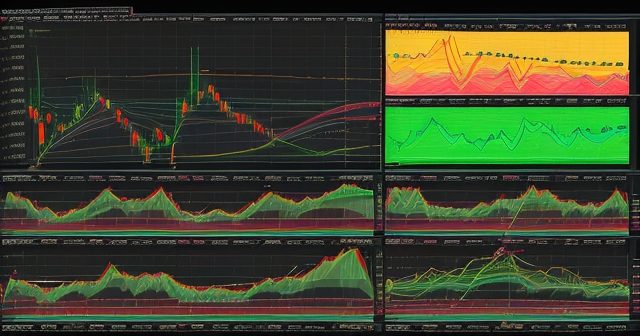
Choosing Your Period: Short-Term Signals vs. Long-Term Trends
One of the key decisions when using any moving average is selecting the right time period. The period represents the number of data points (e.g., days, hours, minutes) included in the calculation. Your choice of period depends entirely on your trading style and the timeframe you’re analyzing.
- Shorter Periods (e.g., 5, 10, 12, 20, 21, 26 periods): These EMAs react very quickly to price changes. They are useful for identifying short-term trends and generating frequent trading signals. Day traders or swing traders might use EMAs with periods like 5, 8, 10, or 12 on intraday charts.
- Medium Periods (e.g., 50, 65 periods): These provide a balance between responsiveness and smoothing. They are often used by swing traders or position traders to identify intermediate trends. The 50-period EMA is a widely watched benchmark.
- Longer Periods (e.g., 100, 200 periods): These EMAs are much slower to react but provide a clearer picture of the long-term trend, filtering out most short-term noise. The 200-period EMA is considered highly significant by institutions and long-term investors; price being above or below the 200-period MA is often used to define a secular bull or bear market.
| EMA Periods | Purpose | Suitable Traders |
|---|---|---|
| 5-12 periods | Identify short-term trends | Day traders, swing traders |
| 50 periods | Balance of responsiveness and smoothing | Swing traders, position traders |
| 100-200 periods | Long-term trend analysis | Long-term investors, institutions |
There’s no single “best” EMA period; it often requires experimentation to find what works best for the asset you’re trading and your personal strategy. Some traders even use periods derived from Fibonacci numbers (like 8, 13, 21, 34, 55, 89, 144, 233) believing these numbers hold significance in market cycles. The key is consistency and understanding what the chosen period tells you about the price action.
EMAs as Dynamic Support and Resistance
Beyond just identifying the trend direction, moving averages, especially EMAs, frequently act as dynamic support and resistance levels. What does “dynamic” mean in this context? Unlike static support or resistance lines drawn at specific price points, dynamic levels move and change with the price.
When an asset’s price is in a strong uptrend, the rising EMA (particularly shorter to medium-term ones like the 21-day or 50-day) often acts as support. Price dips down to the EMA line, finds buyers, and bounces back up. It’s like the EMA is a magnetic force pulling the price towards it, but also providing a floor when price falls. This can present potential buying opportunities – buying the dip near a rising EMA.
Conversely, in a downtrend, a falling EMA often acts as resistance. Price rallies up towards the EMA line, encounters sellers, and turns back down. The EMA acts as a ceiling. This can signal potential selling opportunities – selling the rally near a falling EMA.
Observing how price interacts with specific EMAs can provide valuable clues. Does the price consistently bounce off the 21-day EMA in an uptrend? That EMA is acting as strong dynamic support. Does the price repeatedly fail to break above the 50-day EMA in a downtrend? That EMA is acting as strong dynamic resistance. This interaction provides confirmation of the trend’s strength and potential entry/exit points.
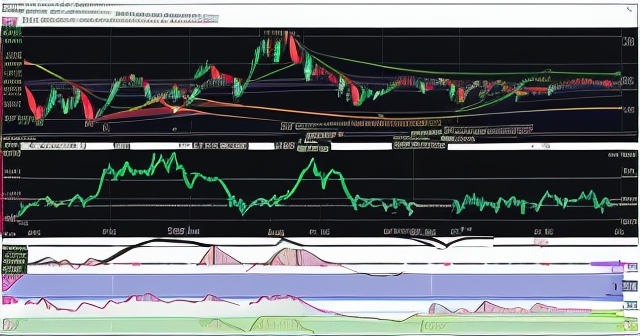
Trading Strategies 1: Following the Trend with EMAs
One of the simplest yet most effective ways to use EMAs is for trend following. The core principle is to trade in the direction of the prevailing trend, as identified by the EMA’s slope and the price’s position relative to the EMA.
- Identifying the Trend: Look at the direction of the EMA line. A consistently rising EMA indicates an uptrend. A consistently falling EMA indicates a downtrend. A relatively flat EMA suggests a sideways or consolidating market.
- Trend Confirmation with Price: In an uptrend, price will generally trade above a key EMA (like the 21-day or 50-day). In a downtrend, price will generally trade below a key EMA.
- Entry Strategy – Buying the Dip: In a confirmed uptrend (EMA rising, price above EMA), you might look for buying opportunities when the price pulls back towards the rising EMA. This is often seen as a favorable entry point because you’re potentially joining the trend at a slight discount. You might place a stop-loss order just below the EMA or a recent low to manage risk.
- Entry Strategy – Selling the Rally: In a confirmed downtrend (EMA falling, price below EMA), you might look for selling or shorting opportunities when the price rallies back towards the falling EMA. You might place a stop-loss order just above the EMA or a recent high.
| Trend Direction | EMA Position | Trading Opportunity |
|---|---|---|
| Uptrend | Price above EMA | Buying the dip |
| Downtrend | Price below EMA | Selling the rally |
The 21-day EMA is particularly noted for its utility in managing winning positions. As described in some trading philosophies, holding a stock as long as it stays above its 21-day EMA can be a powerful strategy for capturing significant moves while minimizing the stress of short-term pullbacks. While it means you won’t likely sell the absolute peak, it helps you stay in a winning trade longer and avoids getting shaken out by minor corrections below shorter-term averages. This strategy emphasizes “sitting tight” during strong trends, a discipline famously advocated by legendary traders like Jesse Livermore.
Trading Strategies 2: Mastering EMA Crossovers
Another widely used set of strategies involves EMA crossovers. This occurs when a shorter-period EMA crosses above or below a longer-period EMA. These crossovers are often interpreted as signals for potential trend changes or continuations.
- Bullish Crossover (Golden Cross Equivalent): This happens when a shorter-term EMA crosses above a longer-term EMA. A classic example is the 50-day EMA crossing above the 200-day EMA. This is generally seen as a strong bullish signal, suggesting that recent price momentum (represented by the shorter EMA) is now stronger than the long-term average, potentially indicating the start of a new uptrend or the confirmation of an existing one.
- Bearish Crossover (Death Cross Equivalent): This happens when a shorter-term EMA crosses below a longer-term EMA. The 50-day EMA crossing below the 200-day EMA is a well-known example. This is typically viewed as a strong bearish signal, suggesting that recent price weakness is starting to outweigh the long-term average, potentially signaling the start of a downtrend or the confirmation of a continuing one.
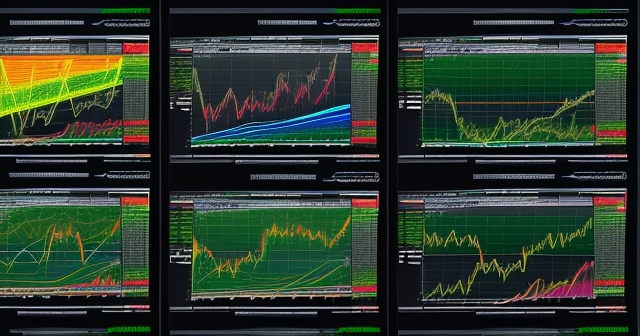
Other popular EMA crossover strategies use different periods, often shorter ones for faster signals. For instance, some traders use an 8-day EMA crossing a 34-day EMA (another Fibonacci-based pair) to signal shorter-term trend shifts. A buy signal might be generated when the 8-day EMA crosses above the 34-day EMA, and a sell signal when the 8-day EMA crosses below the 34-day EMA.
Crossovers are powerful visual signals, but it’s crucial to remember they are lagging indicators. The crossover only occurs after the price has already moved significantly in the new direction. Therefore, relying solely on crossovers can lead to delayed entries or exits. They are best used in conjunction with other indicators and analysis methods for confirmation.
Real-World Application: The Sea Limited Example
Let’s look at a compelling real-world example of how a simple EMA strategy could have been applied. Consider Sea Limited (SE) stock performance during 2020. After breaking out from a base pattern, the stock entered a powerful uptrend.
If a trader had bought SE near a valid buy point (perhaps after consolidating or forming a pattern like a cup-without-handle or shelf) and decided to use the 21-day EMA as their holding guide, they would have held the stock as long as it stayed above this line on a closing basis. Throughout that explosive move, SE’s price consistently respected the 21-day EMA as dynamic support.
Using this strategy, even if you didn’t time the absolute bottom or top perfectly, holding the stock until it closed below the 21-day EMA would have allowed you to capture a substantial portion of that massive gain – potentially yielding returns upwards of 135% from a valid buy point before the stock experienced a significant correction that finally took it below the 21-day EMA. This example illustrates the power of using an EMA not just for entry, but also for managing the position and capturing the bulk of a major trend move, allowing you to “sit tight” and let your winners run, a core principle of profiting in the market.
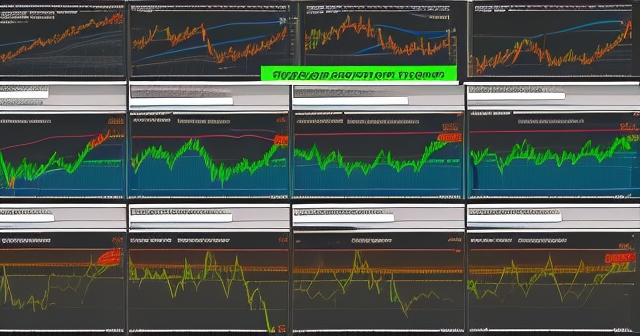
Real-World Application: Bitcoin’s Dance with EMAs
Digital assets like Bitcoin also frequently demonstrate strong interactions with key EMAs. In recent times, we’ve seen how Bitcoin’s price action can pivot around widely watched moving averages.
For instance, Bitcoin recently experienced a significant price dip but found support and bounced near its 50-day EMA. This reinforces the idea that these widely followed moving averages act as key dynamic support levels, especially during corrections within a larger trend. Traders watched this bounce closely, as holding above the 50-day EMA was seen as critical for maintaining the underlying bullish structure.
However, the analysis didn’t stop there. For Bitcoin to achieve a swift and strong rally, technical analysts noted the importance of reclaiming shorter-term EMAs, such as the 26-day EMA. Trading volume also played a crucial role; a bounce off the 50-day EMA backed by strong buying volume would be a more convincing signal than one occurring on low volume. This highlights the necessity of using EMAs not in isolation, but in conjunction with other indicators like volume to assess the strength and sustainability of price moves.
Observing how Bitcoin interacts with its 21-day, 50-day, and 200-day EMAs provides valuable context for its current trend and potential future price movements. A sustained move above resistance levels formed by falling EMAs, especially on increasing volume, would signal strengthening bullish momentum.
If you’re interested in trading volatile assets like Bitcoin or other cryptocurrencies, understanding how to apply EMA analysis is key. Furthermore, if you’re considering exploring the world of Forex trading or other CFD instruments, choosing a platform that offers robust charting tools with customizable EMAs and other indicators is crucial.
If you are looking for a regulated forex broker capable of trading globally, Moneta Markets offers multi-regulations, including FSCA, ASIC, FSA, with comprehensive services like fund custodianship, free VPS, and 24/7 customer service, making it a popular choice among traders.
The Golden and Death Cross: Classic EMA Signals
We touched upon these briefly in the crossover section, but the Golden Cross and Death Cross are such classic and widely followed moving average signals that they warrant their own discussion. While they can use either SMAs or EMAs, the interpretation is similar, though EMAs will provide slightly faster signals.
- The Golden Cross: This bullish signal occurs when the 50-day moving average (SMA or EMA) crosses above the 200-day moving average (SMA or EMA). It signifies that the medium-term price momentum has shifted upwards and has now surpassed the long-term average trend. Historically, Golden Crosses have often preceded significant bull markets, although they are not foolproof predictors and can sometimes occur after a rally is already well underway (again, due to their lagging nature).
- The Death Cross: This bearish signal occurs when the 50-day moving average (SMA or EMA) crosses below the 200-day moving average (SMA or EMA). It indicates that the medium-term price weakness has overwhelmed the long-term average trend. Death Crosses have historically been associated with the onset or confirmation of bear markets. Like the Golden Cross, it’s a lagging indicator and should be used in conjunction with other analysis.
| Signal Type | Condition | Implication |
|---|---|---|
| Golden Cross | 50-day EMA crosses above 200-day EMA | Potential bullish trend |
| Death Cross | 50-day EMA crosses below 200-day EMA | Potential bearish trend |
These crossovers are highly watched by both technical analysts and fundamental investors because the 50-day and 200-day moving averages are considered significant benchmarks of market health. The collective action of many traders and investors reacting to these signals can sometimes make them self-fulfilling prophecies, adding to their perceived importance.
While simple, understanding these two major crossover events provides valuable context for the overall market or asset trend on a longer timeframe. They act as major signposts, even if they don’t offer precise short-term trading entries or exits.
Beyond the Basics: Using Multiple EMAs
Many traders don’t rely on just one EMA. They use multiple EMAs of different periods on the same chart to gain a more nuanced understanding of the price action and trend strength across different timeframes.
For example, a common setup involves using three EMAs: a short-term (e.g., 8 or 10-day), a medium-term (e.g., 21 or 50-day), and a long-term (e.g., 200-day) EMA. Observing the relative positions of these EMAs can provide a richer picture:
- In a strong uptrend, you might see the short-term EMA above the medium-term EMA, and both above the long-term EMA (e.g., 10-day EMA > 21-day EMA > 200-day EMA). This alignment of EMAs across timeframes confirms bullish momentum.
- In a strong downtrend, the opposite might be true: the short-term EMA below the medium-term EMA, and both below the long-term EMA (e.g., 10-day EMA < 21-day EMA < 200-day EMA).
- When the EMAs are intertwined or moving sideways together, it suggests a lack of clear trend or market consolidation.
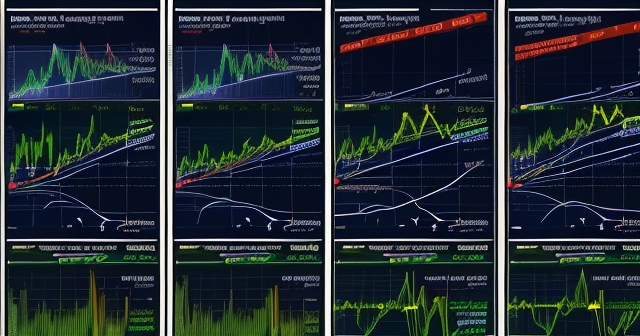
The spacing between the EMAs can also indicate trend strength. Widely separated EMAs suggest a strong, accelerating trend, while EMAs converging towards each other can signal slowing momentum or a potential trend reversal.
Using multiple EMAs allows you to see the interplay between different timeframes and can help refine entry and exit signals. For instance, a short-term EMA crossing the medium-term EMA might be a signal for a swing trade, while the position relative to the long-term EMA provides context about the overall market environment.
The Pitfalls and Limitations of EMAs
Despite their popularity and utility, it’s crucial to understand the limitations of Exponential Moving Averages. Like all technical indicators derived solely from price, EMAs are inherently lagging indicators.
What does this mean? It means they are based on past price data and do not predict the future. An EMA signal confirms what the price has already been doing, rather than forecasting what it will do next. This lagging nature can sometimes cause delays in identifying true trend changes, leading to missed opportunities or entries/exits that are not at the absolute best price points.
Furthermore, the increased responsiveness of EMAs compared to SMAs, while beneficial for quick signals in trending markets, can also lead to more false signals or “whipsaws” in choppy or sideways markets. In such conditions, price might repeatedly cross above and below the EMA, generating buy and sell signals that quickly reverse, potentially leading to multiple losing trades.
Other pitfalls include:
- Parameter Sensitivity: Choosing an inappropriate EMA period for the asset or timeframe can generate misleading signals.
- Ignoring Context: Using EMAs in isolation without considering other technical factors (like trading volume, chart patterns, candlestick analysis) or fundamental factors can be detrimental.
- Over-optimization: Spending too much time trying to find the “perfect” EMA settings for historical data can lead to strategies that fail in live trading conditions.
A good trader understands that no single indicator is a crystal ball. EMAs provide valuable insights into trend and momentum, but they must be used as part of a broader analytical framework. Consider market volatility, trading volume, and the presence of clear chart patterns alongside your EMA analysis. Remember the Bitcoin example – the bounce off the 50-day EMA was significant, but the strength of the subsequent rally depended heavily on trading volume.
Best Practices for Using EMAs Effectively
Given the potential pitfalls, how can you maximize the effectiveness of EMAs in your trading?
- Use EMAs with the Trend: Avoid fighting the trend. If the EMA indicates a strong uptrend, focus on looking for buying opportunities on dips. If it shows a downtrend, look for selling opportunities on rallies.
- Confirm with Other Indicators: Always seek confirmation from other technical tools. For example, is a potential buy signal near a rising EMA also accompanied by increasing trading volume, a bullish candlestick pattern, or an oversold reading on a momentum indicator like the RSI?
- Choose Appropriate Periods: Match your EMA periods to your trading style (short-term for day/swing trading, long-term for position/investing). Experiment to see which periods the asset you trade tends to respect.
- Consider Multiple Timeframes: Look at EMAs on higher timeframes to understand the broader trend context before making decisions on shorter timeframes.
- Be Mindful of Volatility: In highly volatile markets, shorter EMAs may produce more whipsaws. Longer EMAs might provide more reliable signals, or you might need to use wider stop-losses.
- Backtest Your Strategy: Before trading with real money, test your specific EMA-based strategy on historical data for the assets you plan to trade. This helps you understand its typical performance, win rate, and drawdown characteristics.
- Manage Risk: Always use stop-loss orders when trading based on EMA signals to protect your capital if the market moves against you.
- Integrate with Fundamentals: For longer-term trading or investing, consider fundamental factors alongside your technical analysis. A strong fundamental story combined with a bullish technical setup (like price breaking above key EMAs) can provide higher-probability trades.
Remember, successful trading isn’t just about finding the “perfect” indicator; it’s about applying tools like EMAs consistently, with discipline, risk management, and a comprehensive view of the market. By combining the responsiveness of EMAs with sound trading principles, you enhance your ability to navigate the complexities of the financial markets.
If you’re venturing into diverse markets like Forex or seeking a platform that supports detailed technical analysis with a variety of indicators, including EMAs, your choice of broker matters.
When considering forex trading or exploring more CFD products, Moneta Markets is a platform worth exploring. It is based in Australia and provides access to over 1000 financial products, catering to both novice and professional traders.
Finding a platform with robust charting capabilities and reliable data is a key step in applying what you’ve learned about tools like EMAs effectively.
Refining Your Approach: EMAs and Volume
We’ve touched upon volume briefly, but its relationship with EMA signals is crucial for confirmation. Trading volume indicates the level of participation and conviction behind a price move. When price moves in the direction indicated by an EMA signal, ideally, you want to see confirming volume.
For instance, if price bounces off a rising EMA (acting as support) and turns upwards, check the volume on that bounce. A bounce on heavy volume suggests strong buying pressure, adding conviction to the potential continuation of the uptrend. Conversely, a bounce on low volume might indicate weak demand and could be prone to failure.
Similarly, if price breaks below a rising EMA (a potential sell signal or sign of a trend change), look for increasing volume on that breakdown. A break below support on high selling volume is a much stronger bearish signal than a shallow dip on low volume.
Comparing trading volume around EMA interactions helps you filter out weaker signals from stronger ones. A signal from an EMA that is not confirmed by corresponding volume can often be a false move or a “head fake” before the price reverses back to the prevailing trend.
Integrating volume analysis with your EMA strategy adds another layer of confirmation, increasing the probability of your trades. It helps you gauge the market’s conviction in the move being signaled by the EMA.
Conclusion: Empowering Your Trading Decisions with EMAs
Exponential Moving Averages are undeniably powerful and versatile tools in the realm of technical analysis. Their responsiveness to recent price changes makes them particularly valuable for identifying and trading trends across various financial markets, from stocks and indexes to commodities, cryptocurrencies, and Forex.
We’ve explored how EMAs smooth price data, how they differ from SMAs, how to choose appropriate periods, and how they function as dynamic support and resistance. We’ve also delved into practical trading strategies, including trend following and powerful crossover signals like the Golden Cross and Death Cross, illustrating their application with real-world examples like Sea Limited and Bitcoin.
Crucially, we’ve also addressed their limitations as lagging indicators and their susceptibility to false signals, emphasizing the need for confirmation from other technical indicators and volume analysis. Using multiple EMAs and considering different timeframes further enhances your ability to interpret market dynamics.
Mastering EMAs is an ongoing process that requires practice, observation, and discipline. By understanding not just how they are calculated, but how they interact with price action and how to integrate them into a comprehensive trading plan, you can significantly enhance your decision-making process. They provide a lens through which to view the underlying current of the market, helping you distinguish genuine trends from mere noise.
Equipped with this knowledge, you are better prepared to apply these concepts in your own trading journey. Remember to start small, practice on historical data, and always prioritize risk management. The path to becoming a profitable trader is one of continuous learning and refinement, and understanding tools like Exponential Moving Averages is a fundamental step on that path.
When choosing a trading platform, Moneta Markets offers flexibility and technical advantages worth noting. It supports platforms like MT4, MT5, Pro Trader, combining fast execution with low spread settings, providing an excellent trading experience.
exponential moving averagesFAQ
Q:What is the main advantage of using EMAs over SMAs?
A:EMAs are more reactive to recent price changes compared to SMAs, making them better for identifying current market trends.
Q:How do I choose the right EMA period for my trading style?
A:You should select EMA periods based on your trading strategy, with shorter periods for day trading and longer periods for long-term investing.
Q:What can I do to confirm EMA signals?
A:Look for confirmation from volume trends, other technical indicators, and market context to enhance the reliability of your trading signals.
